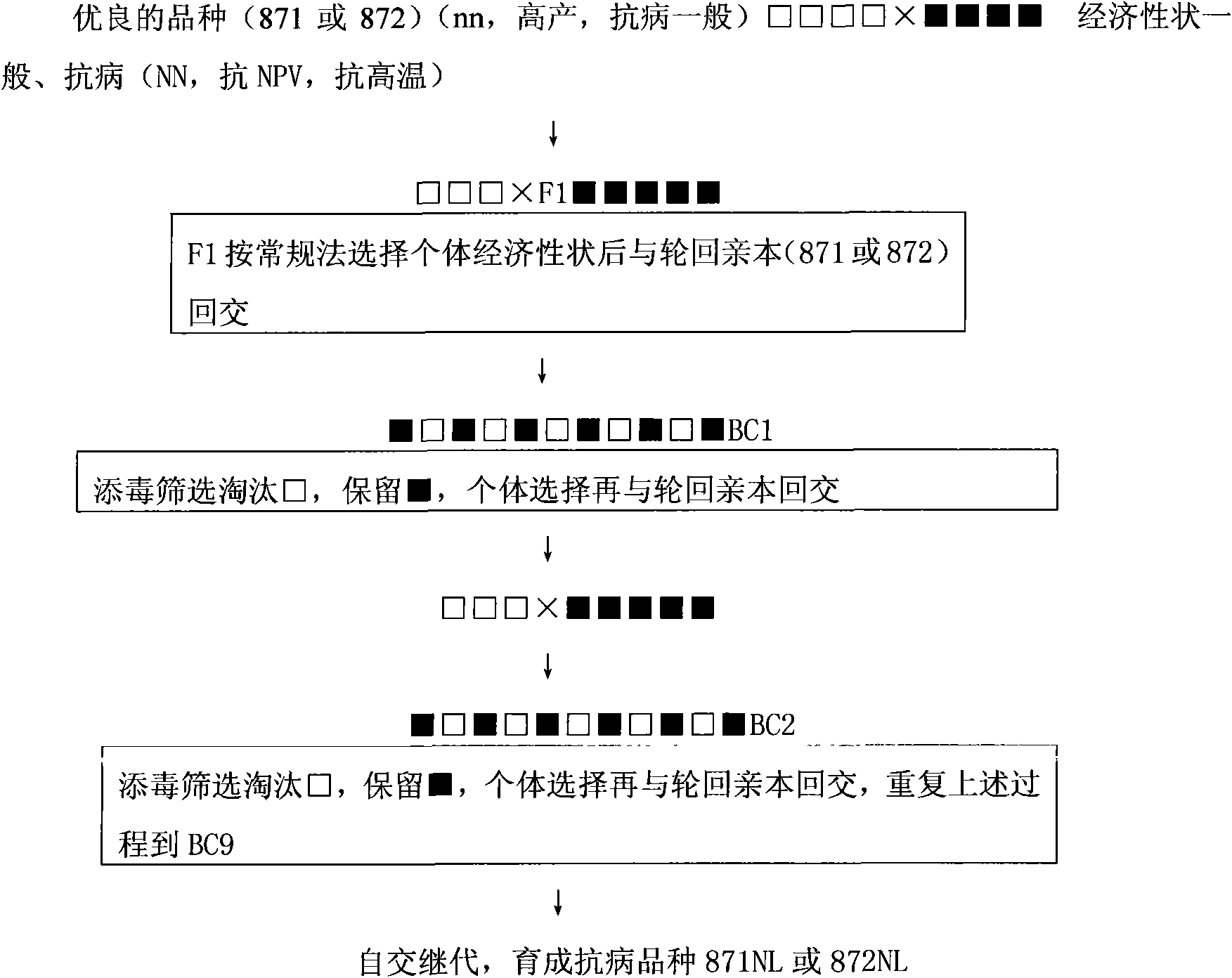Method for select-breeding anti-virosis Bombyx mori varieties by utilizing Thailand Bombyx mori disease-resistant gene
A disease-resistant gene and virus-resistant technology, applied in animal husbandry and other directions, can solve problems such as failure to obtain disease-resistant genes of silkworm and no disease-resistant silkworm varieties, and achieve improved resistance, strong operability, and good economic traits. Effect
- Summary
- Abstract
- Description
- Claims
- Application Information
AI Technical Summary
Problems solved by technology
Method used
Image
Examples
Embodiment Construction
[0019] The method for selecting and breeding antiviral disease silkworm varieties by using the Thai silkworm disease-resistant gene is characterized in that it comprises the following steps:
[0020] E) select spring and autumn and use my country's current silkworm variety 871 as the female parent, and use the imported Thai tropical disease-resistant variety NL as the male parent; hybridize and import the disease-resistant gene;
[0021] f) The 2nd and 3rd generation silkworms of hybridization are separately mixed and reared, and each generation of hybridization starts from the 2nd age, adopts the method of "group feeding" NPV nuclear polyhedrosis virus, and the method of "increasing the concentration of the virus gradually by age" Screening; 2nd instar, add food 5×10 4 NPV virus particles / mL of NPV virus liquid were screened; the third age group fed 5×10 5 NPV virus particles / mL of NPV virus liquid were screened; the 4th age group fed 5×10 6 NPV virus particles / mL of NPV vi...
PUM
 Login to View More
Login to View More Abstract
Description
Claims
Application Information
 Login to View More
Login to View More - R&D
- Intellectual Property
- Life Sciences
- Materials
- Tech Scout
- Unparalleled Data Quality
- Higher Quality Content
- 60% Fewer Hallucinations
Browse by: Latest US Patents, China's latest patents, Technical Efficacy Thesaurus, Application Domain, Technology Topic, Popular Technical Reports.
© 2025 PatSnap. All rights reserved.Legal|Privacy policy|Modern Slavery Act Transparency Statement|Sitemap|About US| Contact US: help@patsnap.com

